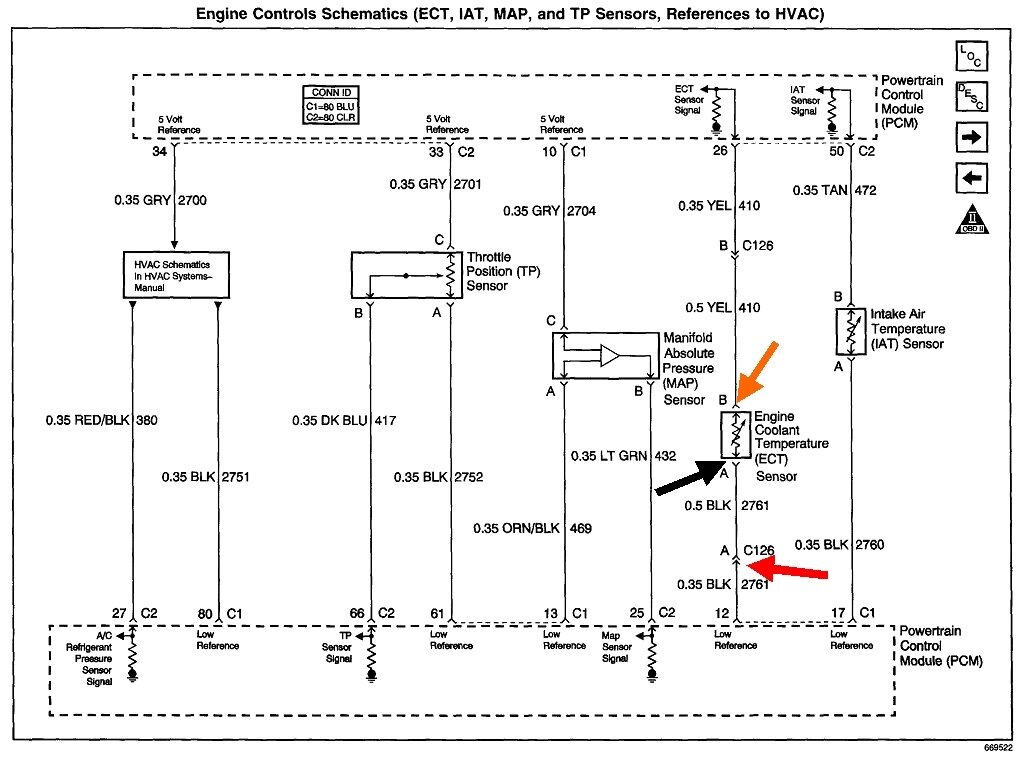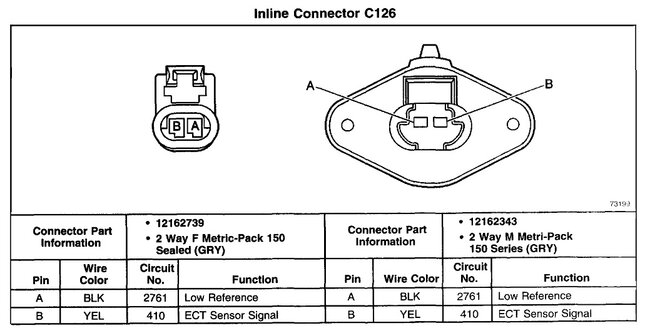Nope. You stepped on the problem already. Thank you for including the voltage test results. You're a few steps ahead already.
For a temperature sensor circuit, it's fed with 5.0 volts, and part of the sensing circuitry is inside the Engine Computer. Some of that 5.0 volts is "dropped" inside the computer. What remains is the signal voltage that you can measure at the sensor. For this type of circuit, the acceptable range of signal voltage is 0.5 to 4.5 volts, give or take a little. The 5.0 volts you found is outside that range and is what triggers diagnostic fault codes, and, in this case, puts it into default mode for safety. The computer can't know actual coolant temperature, so it turns on the radiator fan just in case it's running hot.
There's one critical point you must be aware of. Voltage readings in these circuits are only valid when taken with the sensor plugged in. If you unplug it, then measure on the yellow wire, you will find 5.0 volts. In fact, doing that is a fast way to verify the cooling fan system is working.
You must take the readings by back-probing through the rubber weather seals alongside the wires. If you still find 5.0 volts on the yellow wire, there is a break in the circuit after that point. See what you find on the black wire at that connector. If you find 0 volts, one of the two pairs of mating terminals in that connector are not making contact. If you find 5.0 volts there, the break is in that black wire going back to the computer, pin 12. A good suspect is the mating terminals in connector C126, (red arrow). The second drawing shows what C126 looks like, but they don't show where it is. It's just a two-wire connector, inline on the way back to the computer.
To identify a bad connection in the sensor's connector, watch the voltage reading on the yellow wire as you wiggle that connector or slowly unplug it. If you see the voltage intermittently drop to around 2.0 to maybe 4.0 volts, it usually doesn't pay to try to pick the terminals to make a better connection. One in the connector is either corroded or spread. One alternative is to find a good one in a salvage yard. Considering the time involved, a better alternative is to get a new connector from an auto parts store. They have huge books showing almost every connector for every brand and model.
Images (Click to make bigger)
Thursday, December 8th, 2022 AT 6:01 PM

